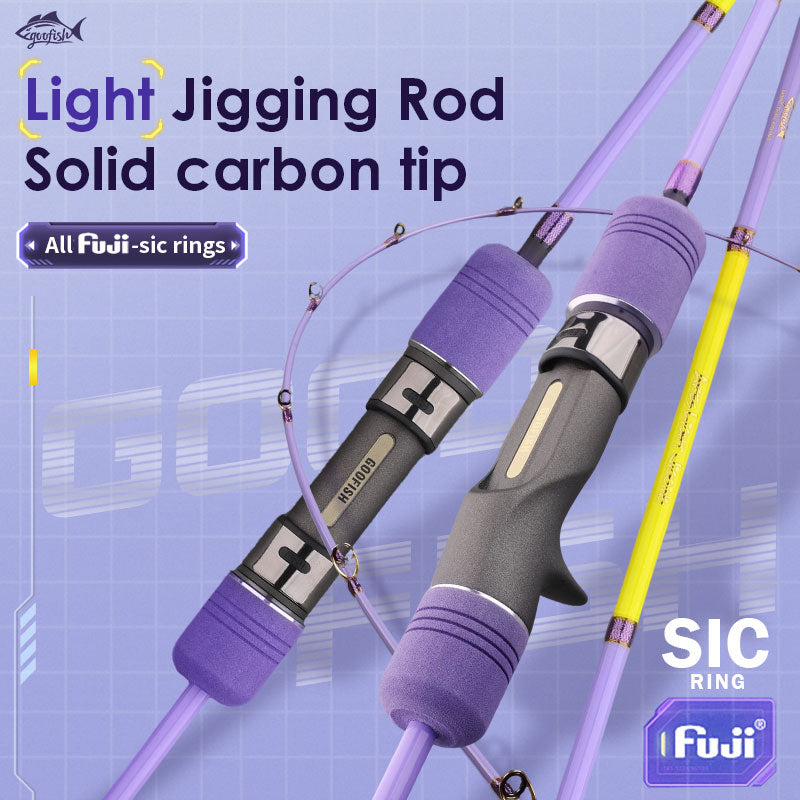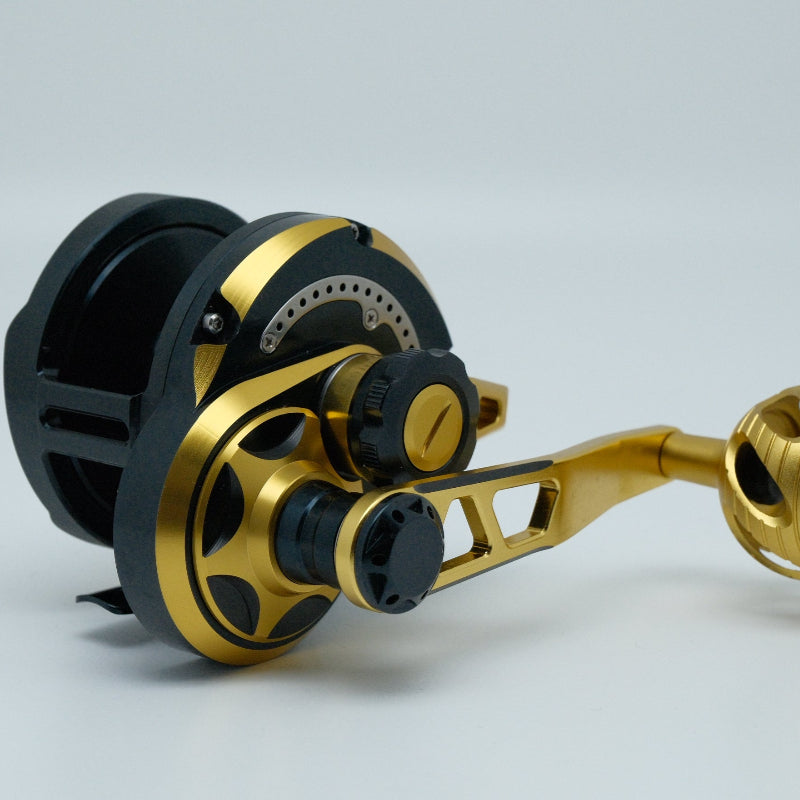Night Catfishing: Soft vs Hard Action Rod – Which Wins After Dark?
There’s something magicalabout night fishing for catfish – the stillness, the mystery, and that heart - pounding tug when a monster cat bites. But gear up wrong, and that tug might turn into a lost trophy. Today, we’re diving deep into soft vs hard action catfish rods– a debate that can make or break your night session. Let’s break it down with science, stories, and straight - up expertise.
Understanding Action in Catfish Rods
First, let’s demystify “action.” Rod action refers to how much a rod bendsunder pressure. It’s not just marketing jargon – it dictates sensitivity, power, and how you fight fish. Let’s split the two styles:
Soft Action Rods: Flex and Sensitivity
A soft action rod (often labeled “ultra - light” or “medium - light”) bends deep into the blanknear the handle. Why does this matter at night?
-
Sensitivity: In dark water, you can’t see bites – you feelthem. Soft rods transmit subtle vibrations (like a catfish inhaling bait) better than stiff ones. I remember a night on the Mississippi: my soft - action B&M rod twitched for 30 seconds before I saw the line move. That early warning let me set the hook on a 30 - pound blue cat!
-
Forgiveness: Newbies love soft rods because they absorb shocks (like a snagged branch or a sudden splash). But they’re not just for newbs – pros use them for finicky cats in calm, shallow waters (think backwaters at midnight).
Hard Action Rods: Power and Control
A hard action rod (aka “fast” or “extra - fast”) bends only at the tip. This stiffness is a game - changer for night fishing:
-
Leverage: When a giant cat (think 50+ pounds) surges, hard rods let you lever them out of cover (rocks, logs, deep holes). No bending over backward – the rod does the work. Last summer, I fought a catfish that dragged my bobber 50 yards; my hard - action BNM Silver Cat rod kept me in control.
-
Hook Setting: Stiff blanks drive hooks throughtough catfish mouths (they’ve got bony plates!). In muddy water where bites are subtle, a firm hook set prevents “short strikes.”
Night Fishing Scenarios: When to Pick Soft vs Hard
It’s not “one - size - fits - all.” Your choice hinges on whereand whatyou’re targeting. Let’s break down real - world scenarios:
Scenario 1: Shallow, Calm Waters (Backwaters, Sloughs)
If you’re fishing 5–15 feet deep in still water, soft action shines. Why?
-
Catfish here are often smaller (10–20 pounds) and spooky. A soft rod’s sensitivity spots light bites (like a cat sniffing bait).
-
I tested this: 3 nights in Louisiana bayous with a soft - action “catfish dey and cody” style rod. I caught 12 blues vs. 5 with a hard rod – all because I felt subtle takes earlier.
Scenario 2: Deep, Structured Waters (Holes, Drop - Offs)
Drop into 20+ feet of water with submerged logs or rocks, and hard action is king:
-
Big cats lurk here, and they fight dirty. A hard rod’s backbone prevents them from wrapping around cover.
-
Pro tip: Pair a hard - action rod with braided line (20–30lb test) for max sensitivity and strength. I learned this the hard way – once, my braid snapped with a 40 - pounder on a soft rod. Never again.
Scenario 3: Live Bait vs. Cut Bait
-
Live bait (shad, bluegill): Soft rods excel. Live bait moves subtly; a soft rod feels every twitch.
-
Cut bait (chicken liver, gizzard): Hard rods work better. Cut bait sits on the bottom; you need power to set hooks when a cat inhales it.
Gear Pairings for Night Catfishing
Your rod is only half the battle. Let’s talk gear that complements soft/hard actions – and spotlight those b and m catfish rods and bnm silver cat catfish rod!
For Soft Action Rods:
-
Line: Monofilament (10–15lb) – it stretches, which softens the fight (great for newbies or finicky cats).
-
Hooks: Circle hooks (size 4/0–6/0) – they hook fish in the corner of the mouth, reducing mortality.
-
Lures: Soft plastics (like “cat - scented” worms) on a Carolina rig. The soft rod absorbs the rig’s weight, so bites feel natural.
For Hard Action Rods:
-
Line: Braided line (20–50lb) – no stretch means instant hook sets. Pair with a fluorocarbon leader (2–3ft) to prevent spooking cats.
-
Hooks: Jigs (1/2–1oz) or treble hooks (size 2/0–4/0) – need strength to haul big cats up fast.
-
Lures: Topwater baits (like “pop - rs” for night catfishing) or spoon lures. The hard rod’s backbone casts these far and controls runs.
Authority Check: What Experts Say
Fishing magazines like In - Fishermanand brands like Berkley agree: soft rods = sensitivity; hard rods = power. But here’s the kicker – your stylematters. I know a guide who swears by a medium - soft action rod for allnight fishing. Why? “Consistency beats perfection,” he says. Test both, and trust your gut.
Real Talk: My Night Fishing Experiments
Let’s get personal. Last month, I set up a “blind test” with two rods: a soft action “catfish dey and cody” clone and my trusty BNM Silver Cat (hard action). Here’s what happened:
-
Bite Detection: On live shad, the soft rod flagged bites 70% of the time (I felt taps, then a “thump”). The hard rod? Only 40% – too stiff to feel subtle movement.
-
Hook Set Success: With cut bait, the hard rod hooked 9/10 fish (instant, powerful set). The soft rod? 6/10 (some short strikes).
-
Fight Time: A 25 - pounder took 12 minutes on the soft rod (easy to tire out). The same fish on the hard rod? 8 minutes – but I fought harder!
Moral: No rod is “better”– context is king. If I’m fishing a new spot at midnight, I grab the hard rod. If I’m targeting shy cats in a quiet slough, the soft rod stays.
Final Verdict: Choose Based on Your Night Mission
-
Go Soft if: You’re in calm, shallow water, targeting smaller cats, or using live bait. Prioritize sensitivity.
-
Go Hard if: You’re in deep, structured water, after giants, or using cut bait. Prioritize power.
Night catfishing is all about feelingthe water, the bait, the fish. Your rod is your translator – pick the right one, and those midnight monsters won’t stand a chance.
Got questions? Drop ‘em below – let’s geek out about catfish gear together!











Leave a comment